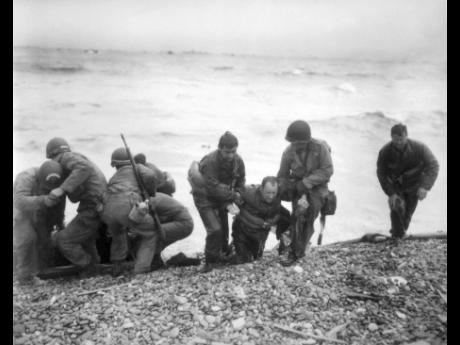Remembering D-Day: Key facts and figures about WWII invasion
OMAHA BEACH (AP):
The D-Day invasion that helped change the course of World War II was unprecedented in scale and audacity. As veterans and world dignitaries commemorate the 79th anniversary of the operation, here is a look at some details about what happened:
WHO TOOK PART
Nearly 160,000 Allied troops landed in Normandy on June 6, 1944. Of those, 73,000 were from the United States and 83,000 from Britain and Canada. Forces from several other countries were also involved, including French troops fighting with Gen Charles de Gaulle against the Nazi occupation.
They faced around 50,000 German forces.
More than two million Allied soldiers, sailors, pilots, medics, and other people from a dozen countries were involved in the overall Operation Overlord, the battle to wrest western France from Nazi control that started on D-Day.
WHERE AND WHEN
The sea landings started at 6:30 a.m. local time, just after dawn, targeting five code-named beaches, one after the other: Omaha, Utah, Gold, Sword, Juno.
The operation also included actions inland, including overnight parachute landings on strategic German sites and US Army Rangers scaling cliffs to take out German gun positions.
Around 11,000 Allied aircraft, 7,000 ships and boats, and thousands of other vehicles were involved in the invasion.
VICTIMS ON ALL SIDES
A total of 4,414 Allied troops were killed on D-Day itself, including 2,501 Americans. More than 5,000 were wounded.
In the ensuing Battle of Normandy, 73,000 Allied forces were killed and 153,000 wounded. The battle – and especially Allied bombings of French villages and cities – killed around 20,000 French civilians.
The exact German casualties aren’t known, but historians estimate between 4,000 and 9,000 men were killed, wounded, or missing during the D-Day invasion alone. About 22,000 German soldiers are among the many buried around Normandy.
SURVIVORS
A few thousand D-Day veterans may be still alive. Tthe youngest are in their late 90s. A few dozen are in Normandy for the 79th anniversary. Charity organisations and local French residents helped organise their trip back to the beaches of D-Day, including providing travel and housing to ensure that they could make the journey.
Next year, world leaders are expected for major commemorations marking the 80th anniversary of the invasion.

